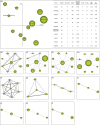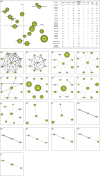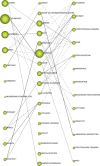STEAM in education: a bibliometric analysis of performance and co-words in Web of Science
- PMID: 34189015
- PMCID: PMC8226355
- DOI: 10.1186/s40594-021-00296-x
STEAM in education: a bibliometric analysis of performance and co-words in Web of Science
Abstract
Background: Emerging methodologies that apply and integrate science, technology, engineering, art, and math (STEAM) in education have appeared in recent years as a pedagogical alternative providing more holistic and attractive education.
Method: The research methodology used in this work is of a bibliometric nature. Specifically, an academic performance analysis and a co-word analysis has been carried out. The term STEAM was analyzed in the Web of Science (WoS) database. The WoS programs Analyze Results, Creation Citation Report, and SciMAT were used. A total of 1116 manuscripts were analyzed.
Results: The results show that studies in the field education of STEAM began in 2006 and have continued uninterruptedly up to the present day, although interest generated in the scientific community has been irregular.
Conclusions: It can be concluded that STEAM studies have not had an established and robust line of research over time, although it can be observed that the trends in this aspect are focused on the scientific branch of education. In addition, the topics of study on STEAM include points related to gender differences, the influence of STEAM on people of different races, the skills developed by students, and training teachers to implement teaching and learning processes with STEAM.
Keywords: Bibliometrics; Education; STEAM; SciMAT.
© The Author(s) 2021.
Conflict of interest statement
Competing interestsThe authors declare that they have no competing interests.
Figures









References
-
- Angel A, Salgado M. Land Art Math: Una actividad STEAM para fomentar la competencia matemática en Educación Infantil. Edma 0-6: Educación Matemática en la Infancia. 2018;7(1):1–11.
-
- Anisimova TI, Sabirova FM, Shatunova OV. Formation of design and research competencies in future teachers in the framework of STEAM education. International Journal of Emerging Technologies in Learning. 2020;15(2):204–217. doi: 10.3991/ijet.v15i02.11537. - DOI
-
- Anito JJC, Morales MPE. The Pedagogical Model of Philippine STEAM Education: drawing implications for the reengineering of Philippine STEAM learning ecosystem. Universal Journal of Educational Research. 2019;7(12):2662–2669. doi: 10.13189/ujer.2019.071213. - DOI
-
- Bassachs M, Cañabate D, Nogué L, Serra T, Bubnys R, Colomer J. Fostering critical reflection in primary education through STEAM approaches. Education in Science. 2020;10(12):1–14. doi: 10.3390/educsci10120384. - DOI
-
- Bati K, Yetişir MI, Çalişkan I, Gunes G, Saçan EG. Teaching the concept of time: a steam-based program on computational thinking in science education. Cogent Education. 2018;5(1):1–16. doi: 10.1080/2331186X.2018.1507306. - DOI
Publication types
LinkOut - more resources
Full Text Sources
